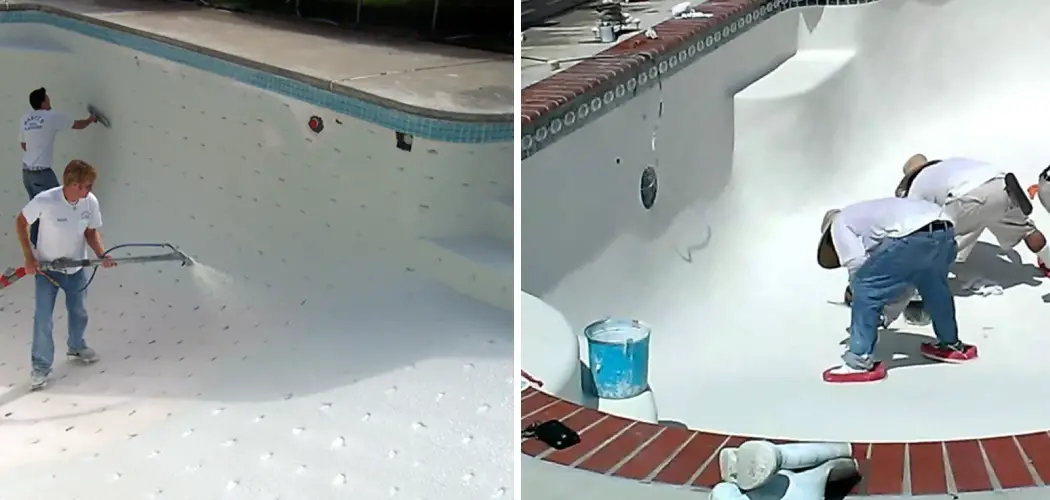Replastering a pool is a daunting task that involves draining the water, chiseling off the old plaster, and applying new layers of plaster. It requires time, effort, and knowledge of the correct techniques to ensure a successful outcome.
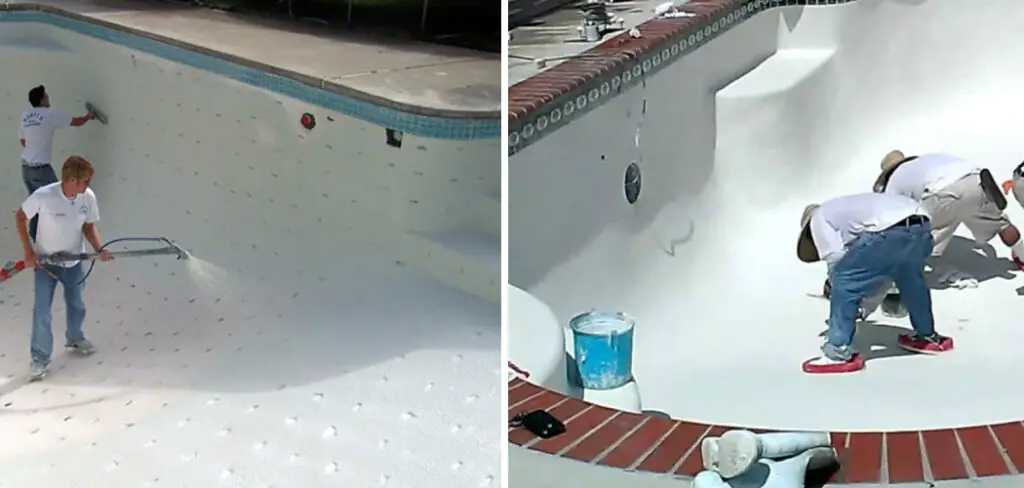
The main advantage of replaster a pool is that it can save you time and money in the long run. Replastering a pool is a necessary maintenance task that needs to be done every 5-10 years, depending on the type of material used for the pool surface. By learning how to replaster your own pool, you can avoid hiring expensive professionals and can instead do the job yourself. In this blog post, You will learn in detail how to replaster a pool.
Tools You Will Need
- Power washer
- Wire brush
- Hammer and chisel
- Pool trowel
- Cement mix
- Water hose
- Plaster trowel
- Finishing trowel
- Rubber float
- Safety equipment (goggles, gloves, etc.)
Replastering a pool is a necessary step to maintain its structural integrity and aesthetic appeal. This process involves removing the old plaster and applying a new layer, typically every 10-15 years. While hiring professionals is always an option, it can be a costly one.
Step-by-step Instructions for How to Replaster a Pool
Step 1: Inspect the Pool Surface
Before starting any replastering project, it is important to carefully inspect the pool surface for any cracks, chips or other damages. These should be repaired before proceeding with the plastering process.
Step 2: Drain the Pool
Next, you will need to drain all of the water from your pool. This can be done using a submersible pump or a pool vacuum. Make sure to drain the water away from your pool area to avoid any potential damage.
Using a chisel and hammer, remove all of the old plaster from the pool surface. Be careful not to damage any of the underlying structure of your pool. You may also need to use a pressure washer to remove any remaining debris or loose plaster.
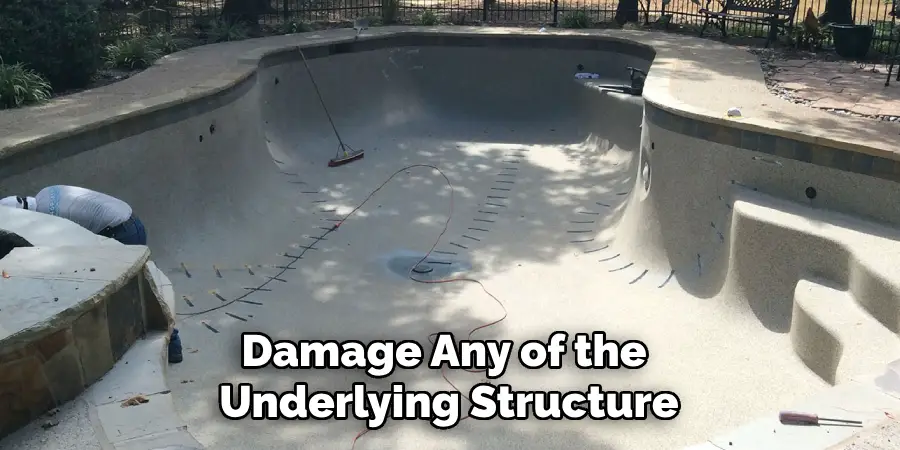
Step 3: Clean and Prepare the Surface
Thoroughly clean the pool surface with a mixture of water and muriatic acid. This will help remove any stains, algae or other contaminants. Rinse the surface thoroughly and let it dry completely before proceeding to the next step.
Before applying new plaster, it is important to apply a bonding agent to the pool surface. This will help the new plaster adhere properly and prevent any potential cracking or peeling.
Step 4: Mix and Apply Plaster
Follow the instructions on your chosen pool plaster mix to create the proper consistency. Using a trowel, carefully apply the mixture onto the pool surface in thin layers, starting from the bottom and working your way up.
Using a pool trowel, smooth out any bumps or imperfections in the plaster. Make sure to also level out the surface for an even finish.
Step 5: Cure and Fill the Pool
Allow the plaster to cure for at least 24 hours before refilling the pool with water. This will give the plaster enough time to set and strengthen.
Once the pool is filled, add the necessary chemicals to balance the water and prevent algae or bacteria growth. Follow the instructions provided by your pool supply store for specific measurements.
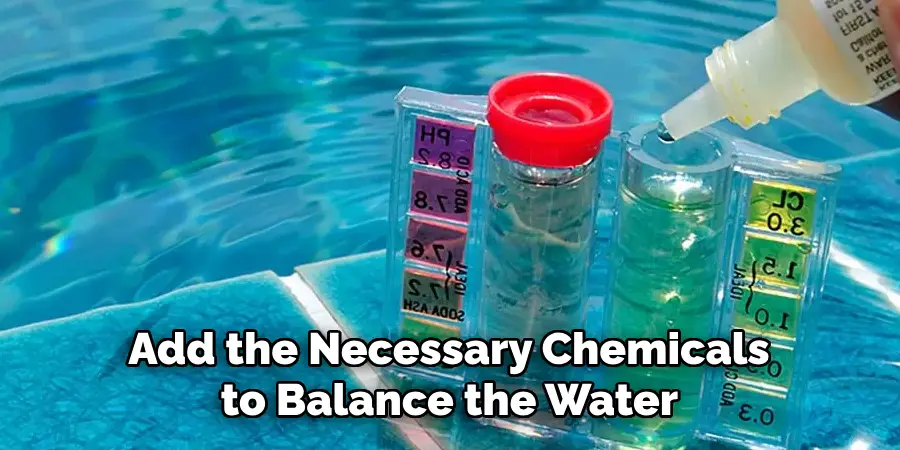
Step 6: Maintain Regularly
To ensure that your newly replastered pool stays in good condition, it is important to regularly clean and maintain it. Brush the walls and floor of the pool weekly, monitor chemical levels, and address any issues promptly. With proper care, your replastered pool can last for many years to come.
Safety Tips for How to Replaster a Pool
- Always use protective gear like gloves, goggles, and a dust mask when working with plaster materials. Plaster particles can cause irritation to the skin and eyes.
- Ensure proper ventilation in the pool area as fumes from plaster materials can be harmful if inhaled.
- Keep children and pets away from the work area to avoid any accidents or injuries.
- Before starting the replastering process, make sure to turn off all electricity and water supply to the pool.
- Use caution when mixing plaster materials as they can be slippery and cause falls.
- Avoid using tools or equipment with metal parts as they can leave scratches on the surface of the new plaster.
- Do not rush the replastering process. Take breaks regularly to avoid fatigue and maintain focus.

How Do You Prepare the Pool for Replastering?
Replastering your pool is an important task that should be done every 8-12 years, depending on the type of plaster used and the condition of your pool. It involves removing the old layer of plaster and replacing it with a new one to keep your pool looking clean and inviting. In this section, we will discuss how to prepare your pool for replastering.
1. Drain the Pool
The first step in preparing your pool for replastering is to drain it. Remove all debris, including leaves and dirt from the bottom of the pool before starting this process. Once drained, use a high-pressure washer to remove any remaining plaster from the walls and floor of your pool. This will ensure that the new plaster adheres properly and lasts for a long time.
2. Repair Any Damage
After draining and cleaning the pool, it’s important to inspect the walls and floor for any damage. Look for cracks, chips, or any other imperfections that need to be repaired before replastering. Make sure to use a waterproof patching compound to fix these issues and allow it to dry completely before moving on to the next step.
3. Acid Wash
An acid wash is necessary to remove any remaining residue or buildup from the old plaster and make sure that the new plaster will bond properly. Be sure to follow safety precautions when handling acid and always wear protective gear. Dilute muriatic acid with water and use a long-handled brush to scrub the walls and floor of your pool. Rinse thoroughly with water to neutralize the acid and remove any debris or loose materials.
4. Fill Any Cracks
After the acid wash, it’s important to fill any remaining cracks in the pool walls and floor. Use a waterproof caulk or plaster patch to fill these cracks and smooth them out with a trowel. This will ensure that your new plaster has a smooth surface to adhere to.
5. Prime the Pool
Before starting the replastering process, it’s important to prime your pool. Use a primer specifically designed for pools and apply it evenly with a roller or sprayer. This will create a good base for the new plaster and help it bond better.
How Do You Clean Up After Replastering?
After replastering your pool, it is important to properly clean up to ensure a smooth and long-lasting finish. Here are some steps to follow:
- Allow the plaster to cure: Before cleaning, make sure that the plaster has fully cured. This can take anywhere from 3-7 days depending on the temperature and humidity levels.
- Remove tape and plastic covers: Once the plaster has cured, remove any tape and plastic covers that were used to protect the tile and other surfaces during replastering.
- Sweep out debris: Use a pool brush or broom to sweep out any debris that may have accumulated on the bottom of the pool during curing.
- Pressure wash: Using a pressure washer, carefully clean off any remaining plaster dust and residue from the walls and floor of the pool.
- Acid wash: After pressure washing, it is recommended to use an acid wash to further clean and brighten the newly replastered surface. Be sure to follow all safety precautions when handling acid.
- Rinse thoroughly: After using any chemicals, be sure to rinse the pool thoroughly with fresh water. This will help neutralize any remaining acid and ensure a clean surface.
- Refill the pool: Once the pool has been cleaned and rinsed, it is safe to refill with water. Be sure to follow proper procedures for filling a newly replastered pool, such as slowly adding water and monitoring pH levels.
- Balance chemicals: After refilling, it is important to properly balance the pool chemicals to ensure a safe and healthy swimming environment.
- Regular maintenance: To keep your newly replastered pool in top condition, it is important to regularly clean and maintain it. This includes routine brushing, vacuuming, and chemical balancing.
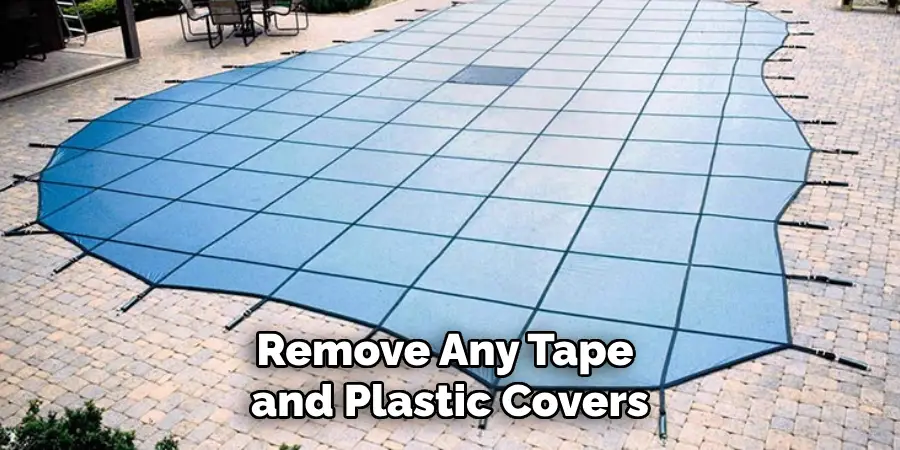
By following these steps, you can ensure that your pool will have a smooth and beautiful finish for years to come after being replastered. So, cleaning up after the process is just as important as the actual replastering itself.
How Long Does It Take for the Plaster to Fully Cure?
One of the most common questions pool owners have when replastering their pool is how long it will take for the plaster to fully cure. After all, you want to get back into your pool as soon as possible! The amount of time it takes for the plaster to cure can vary depending on multiple factors such as weather conditions, type of plaster used, and proper maintenance. Typically, it can take anywhere from 7 to 14 days for the plaster to fully cure.
Weather conditions play a major role in the curing process of pool plaster. If the weather is hot and dry, then the plaster will cure faster as the water evaporates quickly.
On the other hand, if the weather is cold and humid, it can slow down the curing process significantly. It is best to replaster your pool during warm and dry weather conditions for faster curing. The type of plaster used can also affect the curing time. Traditional white plaster, which is made from a mixture of cement, sand, and water, takes longer to cure compared to other types such as pebble or quartz finishes.
Conclusion
In conclusion, the process of replastering a pool may seem daunting at first, but with the right knowledge and tools, it can be done successfully. As discussed in this blog post, preparation is key – ensuring that the pool surface is clean and free of debris before starting the replastering process. Additionally, choosing the right plaster material and applying it correctly will greatly impact the longevity and appearance of your pool.
It’s important to note that replastering is not a one-time fix and will need to be done periodically, depending on the type of plaster used and the amount of use the pool receives.
Regular maintenance such as proper water chemistry and cleaning will also help prolong the life of your newly replastered pool. I hope this article has been beneficial for learning how to replaster a pool. Make Sure the precautionary measures are followed chronologically.
About
Outdoor Fixes is a distinguished figure in the world of Diy design, with a decade of expertise creating innovative and sustainable Diy solutions.
His professional focus lies in merging traditional craftsmanship with modern manufacturing techniques,
fostering designs that are both practical and environmentally conscious. As the author of diy,
outdoorfixes delves into the art and science of outdoorfixes-making, inspiring artisans and industry professionals alike.
Education RMIT University
(Melbourne, Australia) Associate Degree in Design (Outdoor Fixes) Focus on sustainable design, industry-driven projects,
and practical craftsmanship. Gained hands-on experience with traditional and digital manufacturing tools, such as CAD and CNC software.
Nottingham Trent University
(United Kingdom) Bachelor’s in outdoorfixes.com and Product Design (Honors) Specialized in product design with a focus on blending creativity with production
techniques. Participated in industry projects, working with companies like John Lewis and Vitsoe to gain real-world insights.
Publications and Impact
In diy, Outdoor Fixes his insights on indoor design processes, materials, and strategies for efficient production.
His writing bridges the gap between artisan knowledge and modern industry needs, making it a must-read for both budding designers and seasoned professionals.

